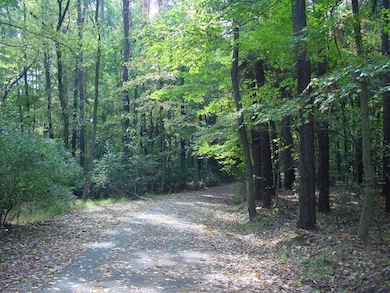This historic parkland landscape lies in the grounds of the Oaks country house, which had existed in one form or another since the 16th century. It was finally demolished between in the late 1950s. Much of the development of the grounds took place in the 18th and early 19th century when it was the estate of Lord Derby. In this period it was a great sporting base and was used for horse racing. Both the peer and his house provided the names for two nationally celebrated horse races, the Derby and the Oaks.The golf course lies to the west of the park, and was opened in 1974 on former farmland. Although inaccessible to the public, tracks surrounded the golf course provide ample views over it.
Local Wildlife Site
Accessible Sites of Importance for Nature Conservation
The Oaks Park and Golf Course
Borough: Sutton
Grade: Borough Grade I
Access: Free public access (part of site)
Area: 95.86 ha
Description
Wildlife
The meadows in the northern part of the park have a good range of chalk-loving wildflowers such as stemless thistle, greater knapweed and hoary plantain. There are impressive swathes of lady's bedstraw in the summer, and cowslips and restharrow in the spring. There are also patches of the nationally rare greater yellow-rattle, a recent colonist here. The common blue butterfly thrives here, thanks to the abundance of its larval food plant, birds-foot trefoil. Other typical meadow butterflies do well on the variety of grasses, which include quaking grass and crested hair-grass.The beech woodland, for which this historic park was famous, was decimated in the Great Storm of 1987, so fast-growing ash and sycamore now dominate with some lime and horse chestnut. Decaying wood makes Oaks Park a good site for fungi, including several rare species. The woodland walk between the two sections of the golf course provides an opportunity to see woodpeckers, bullfinches, blackcaps, nuthatches and, with luck, weasels.The golf course has patches of chalk grassland surviving among the fairways, but the most easily viewed section is next to Fairlawn Road on the southwest edge of the course. However the richest remnant is at the southern tip of the course, where there is a tiny colony of the nationally scarce plant, man orchid.Facilities
Information; car parking; nature trail; toilet (including disabled facilities); refreshments; waymarked walking route; recycling; horse riding; orienteering course; woodland craft centre. The London LOOP passes through the site.
The Oaks Park © L B Sutton

Weasel © Andy Purcell/CEC
Feedback
Have a question or a comment for this site, or notice anything missing or out of date? Please contact us.
